Inara Batcha
Year of birth: 1989
Your education: Higher education, Teacher of Informatics and English, Master of Management, Interior Painting Artist
Describe your art in three words: empathetic, dimensional, introspective
Your discipline: I would probably call myself an abstract painter
Website | Instagram
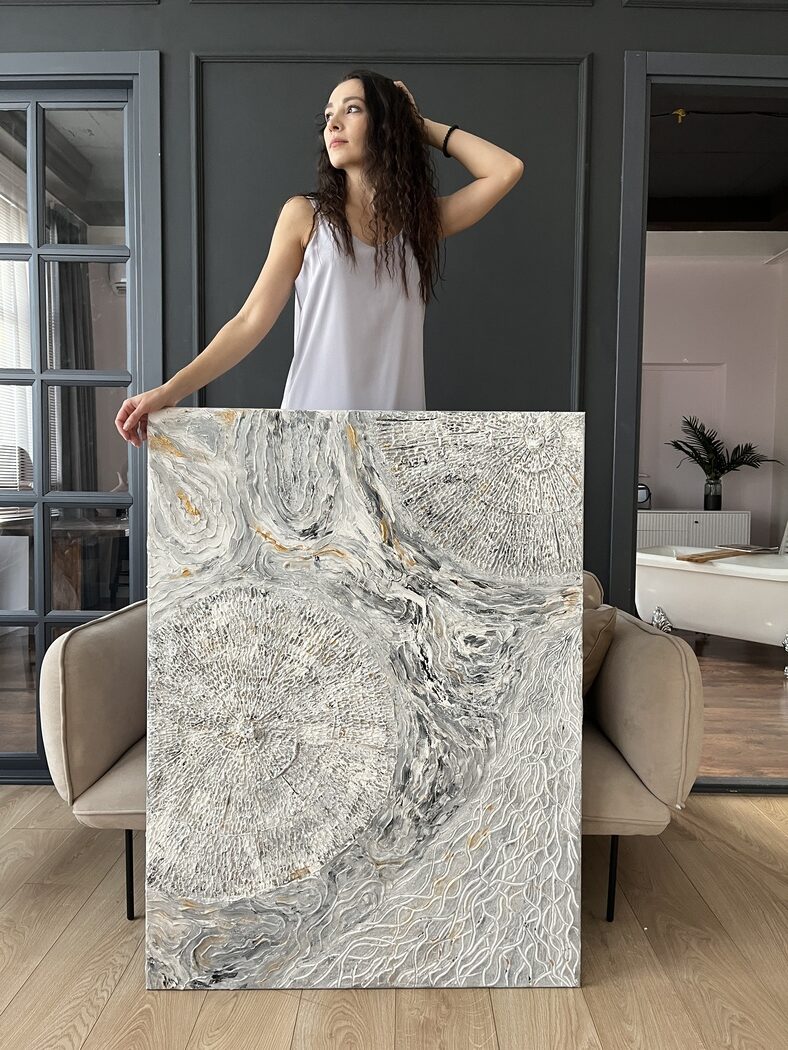
How did your background in Informatics and English influence your approach to art?
For me, knowledge is a tool that significantly makes life easier. For example, knowing English helps in communicating with international colleagues, watching useful lessons, or reading helpful information. It also keeps me up to date with global art trends. Regarding Informatics, it’s about the ability to work with various programs. For instance, I design a catalog of my original paintings, create references, and produce promotional materials for exhibitions. In this, my second degree in management and marketing also plays a crucial role. Overall, every stage of my education, of which I have quite a bit, in one way or another, helps me grow as an artist.
Can you share more about the moment when you decided to pursue art seriously?
It was the moment when I realized that I no longer wanted to grow in the marketing profession, that I was living someone else’s life. It was a tough period of searching for my true self, with no clear direction on how to move forward, who I wanted to be, or what I wanted to offer the world. My family and friends were very supportive at the time. I conducted a survey, asking them how they saw me, what positive qualities they noticed, and what kind of advice they might seek from me. I also learned more about my ancestors, their occupations, and hobbies, and remembered my childhood dreams and aspirations. As a result of this soul-searching, I realized that art had accompanied and surrounded me all my life. I always drew – it gives me energy, lights me up, and brings me joy. And then, magic happened, I can’t describe it any other way – I won money to develop my own business, bought all the necessary tools and materials, and took painting courses. That’s how a new chapter in my life began.
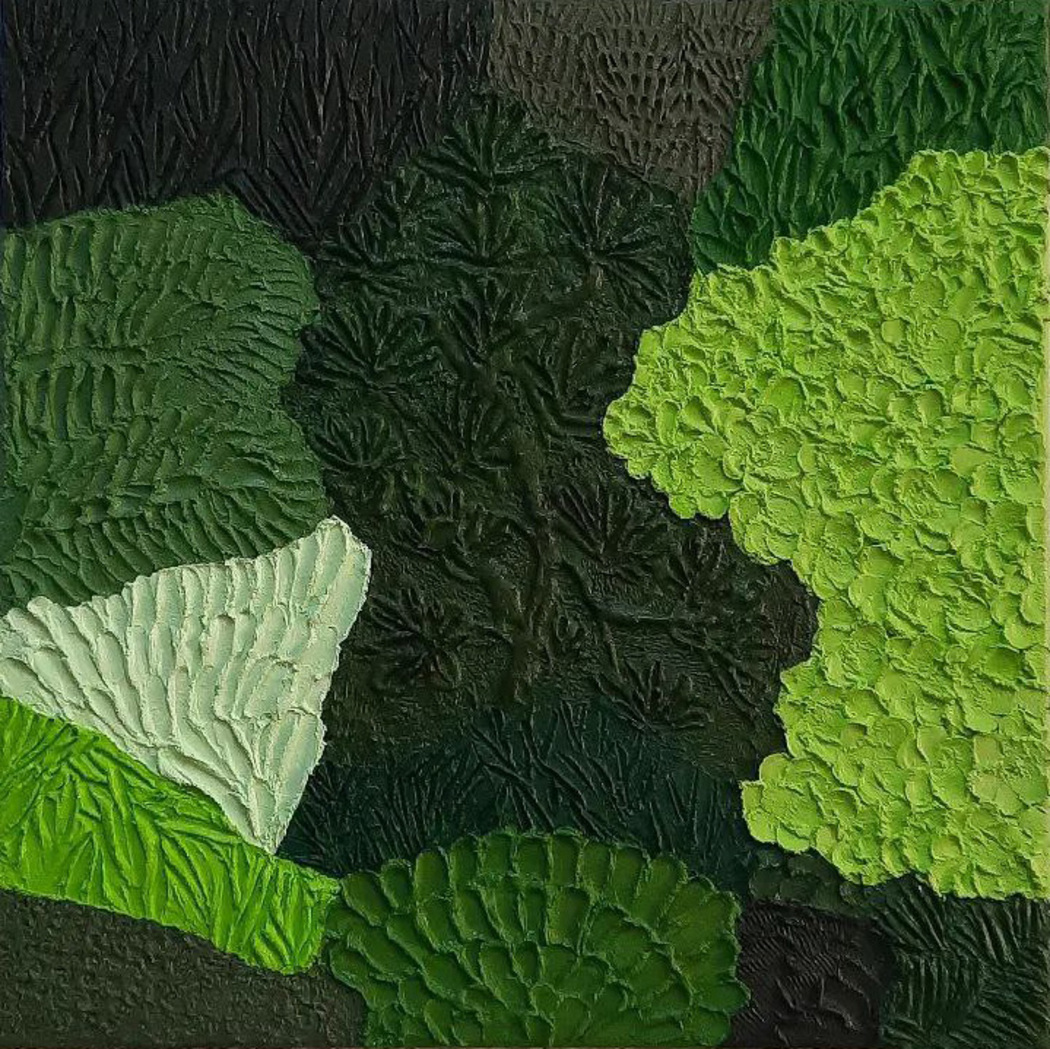 Inara Batcha, Jungle, 2023
Inara Batcha, Jungle, 2023
Nature and human emotions are key themes in your art. How do you go about expressing this connection in your abstract compositions?
Nature never leaves us without emotions. When we see a beautiful lake, we feel awe; when we see leaves falling in autumn, we may feel sad; when standing on a mountain peak, we feel absolute happiness and love.
In my work, I can divide my paintings into two groups. The first is nature through my eyes (e.g., paintings like “Jungle,” “Steppe Palette,” “Mountains”). In these works, the beauty and colors of our planet are expressed through abstract forms of plants and mountain landscapes. The second, deeper and more personal group are the paintings that reflect our emotions through the images of nature. For example, in the painting “Manifestation,” I use textured cracks reminiscent of hardened lava under which a person lies. This lava is like a cocoon where many of us hide, afraid to come out and show ourselves, fearing judgment and criticism. But at any moment, the dormant volcano may awaken.
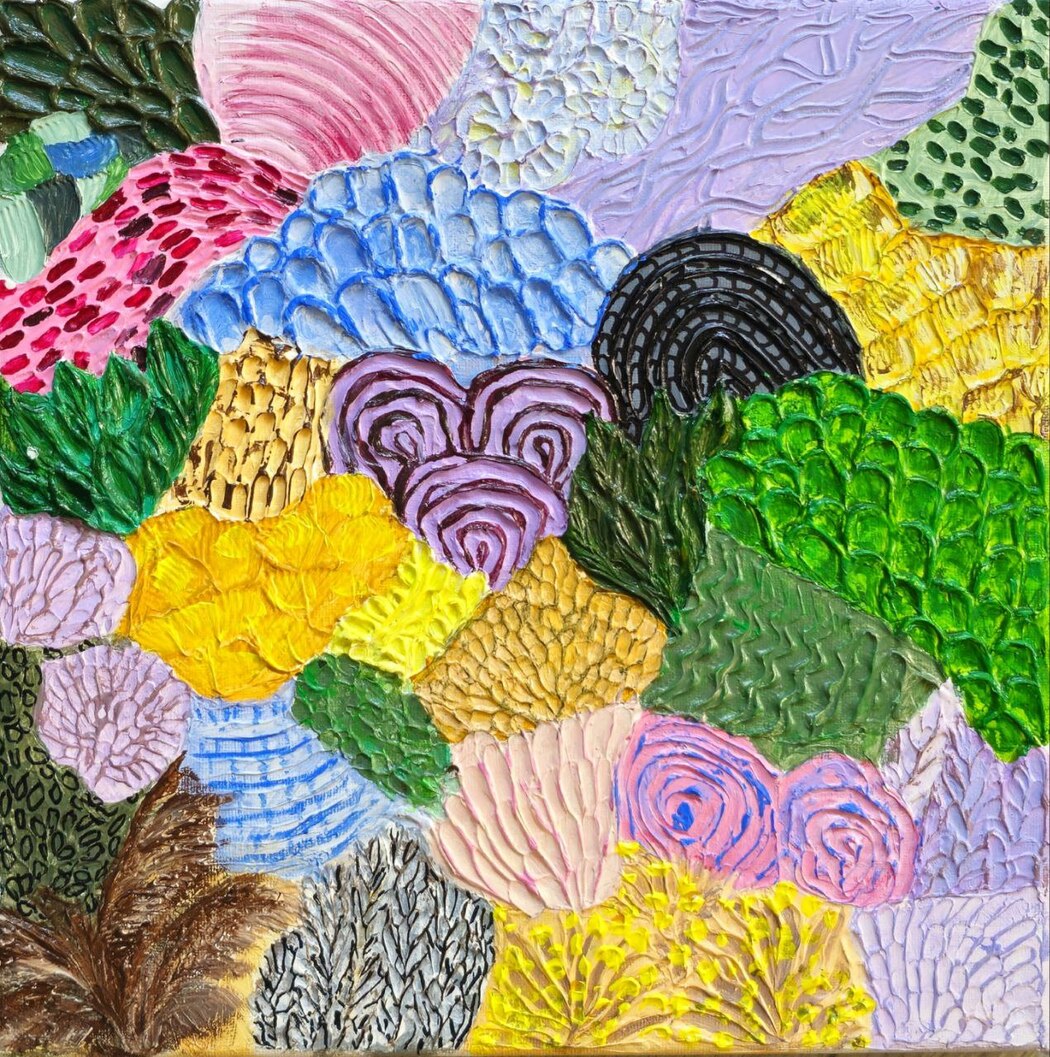 Inara Batcha, Palette of the Steppe, 2024
Inara Batcha, Palette of the Steppe, 2024
As someone without formal art education, what challenges have you faced, and how did you overcome them to establish yourself in the art world?
First and foremost, it’s self-doubt and self-esteem. At first, I was even ashamed to call myself an artist. By the way, I painted “Manifestation” during that time, and it is entirely about me.
Have I overcome it? I think I’m still in the process. But I can definitely say that constant learning, participating in both Russian and international exhibitions, winning a prize in an international abstract art competition, having admirers of my work, and the incredible support of my family have undoubtedly boosted my self-esteem! Now, when people ask me what I do, I proudly say, “I am an artist!”
Could you talk about your process of creating a layered composition? How do you approach the development of a piece from start to finish?
First, of course, I create a reference in my sketchbook, where I also plan the mediums I’ll work with. My favorite art material is textured paste because it makes the painting three-dimensional, allowing you to feel it like a sculpture.
After the reference, I make sketches on the canvas.
The next stage depends on the composition. In some paintings, I first use oil paints, then apply textured paste around them, followed by acrylic layers, gold leaf, and varnish.
In others, I apply texture first, and then create the colored layer with acrylic paints on top of it, finishing with varnish for fixation.
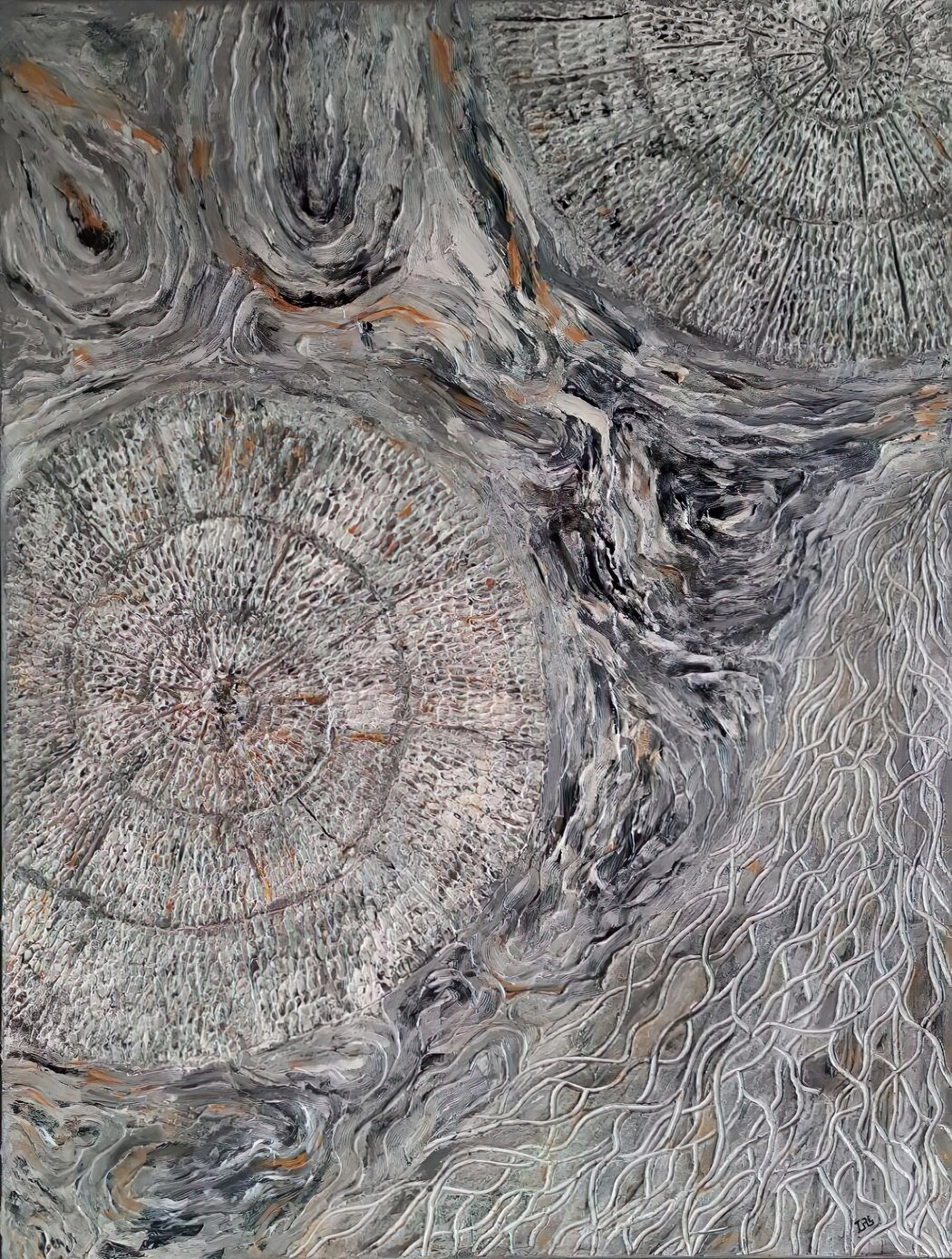 Inara Batcha, Flow, 2023
Inara Batcha, Flow, 2023
Your art often feels like a dialogue between the inner and outer worlds. What emotions do you hope to evoke in viewers through your work?
It’s important to me that viewers feel a connection with the artwork and find a reflection of their emotions or thoughts in it. I love showing a painting without explaining the meaning I initially put into it and asking viewers to tell me what they feel or what they think the painting is about. It’s a fascinating experience – people reveal themselves through the image in the painting. And I genuinely believe that any interpretation is valid. It’s like different stories within the same painting.
You mentioned that you are still searching for your artistic style. How do you navigate this exploration, and what do you hope to discover?
The search for a style is, for me, a continuous process of experimentation and self-discovery. I try different techniques, combine them, and observe what resonates. In this process, I hope to find a balance between technique and self-expression, creating works that will stand out for their depth and unique stylistic identity.
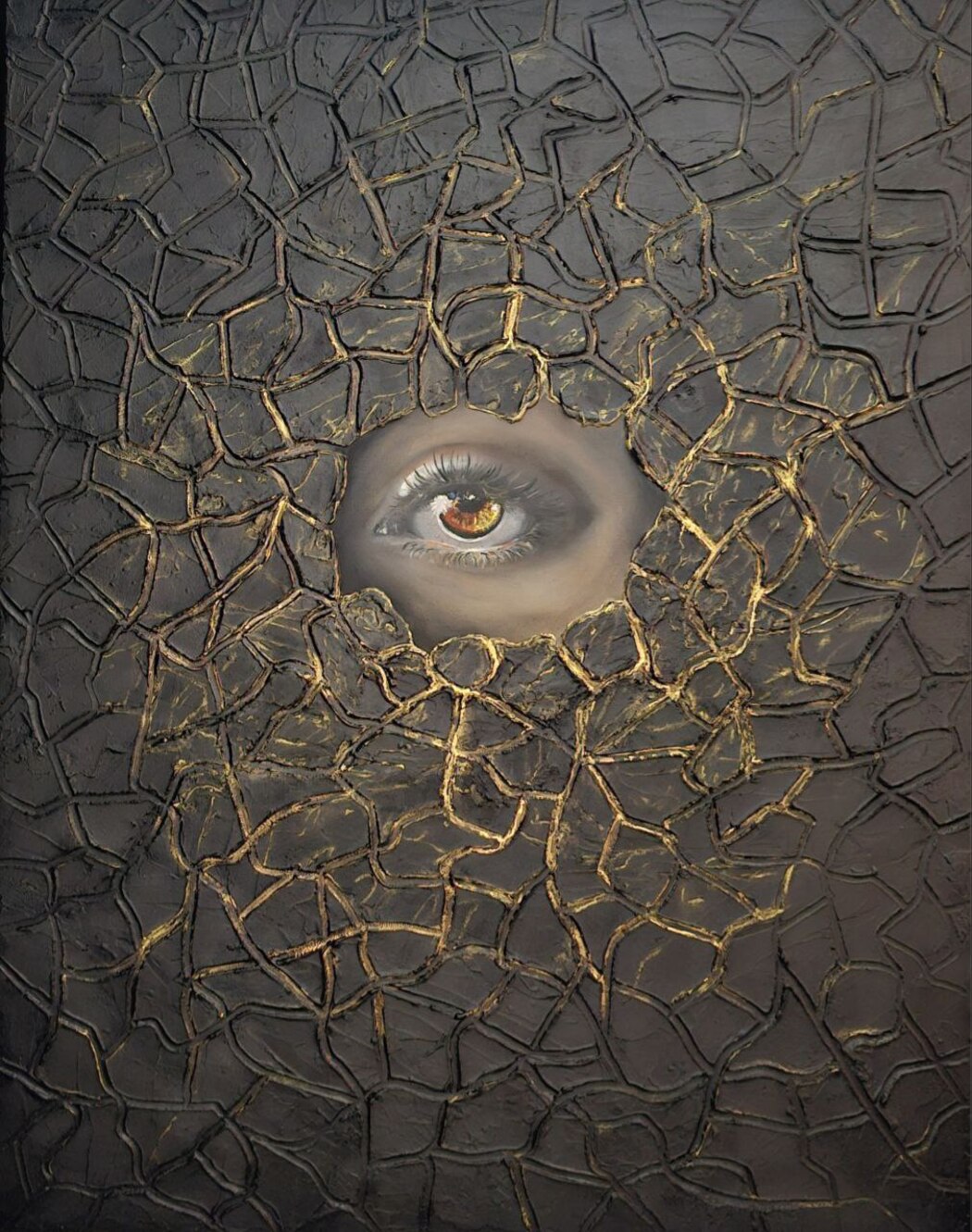 Inara Batcha, Manifestation, 2024
Inara Batcha, Manifestation, 2024

Leave a Reply